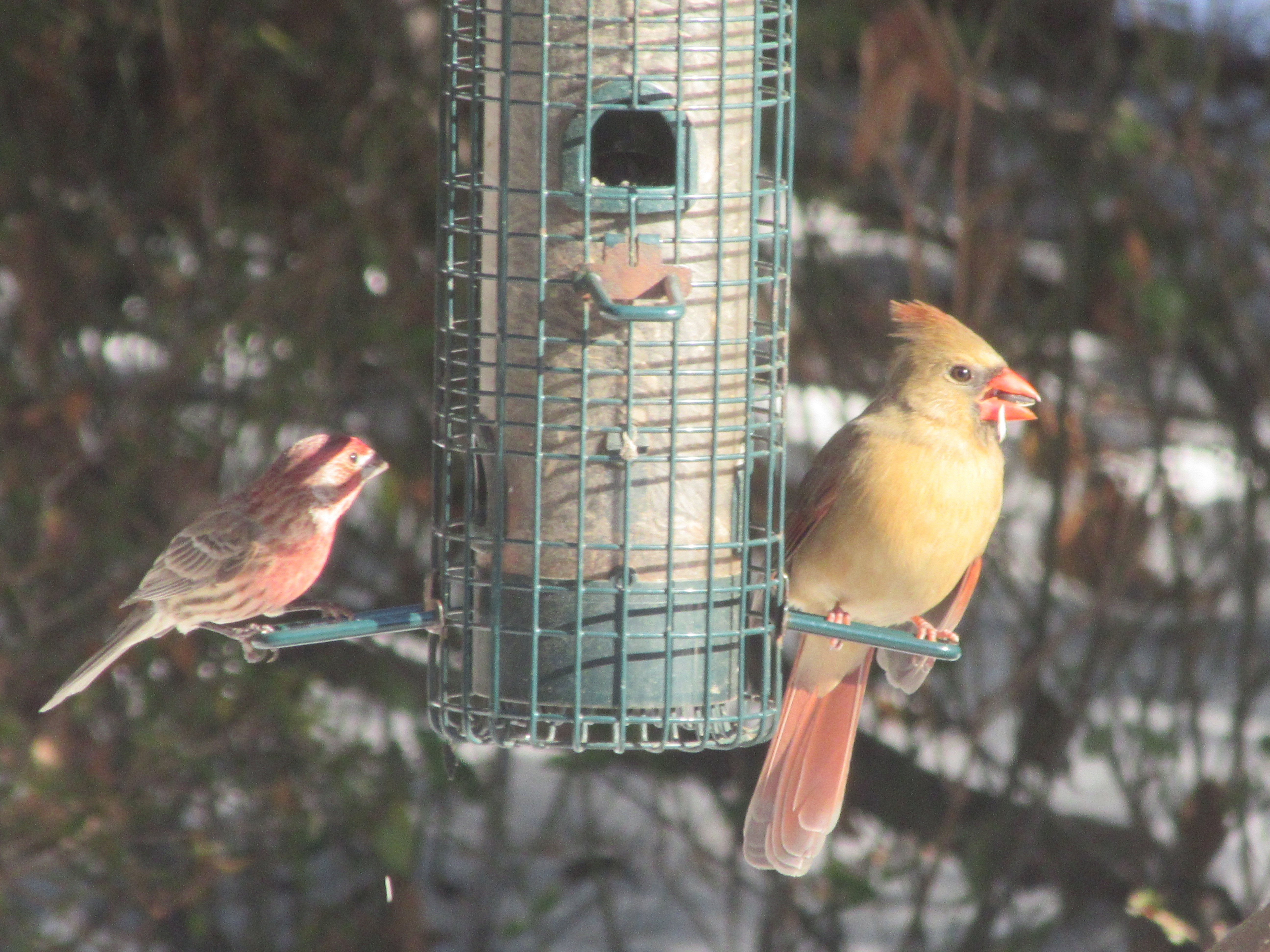In winter’s cold grip, there’s a show going on outside with multiple “actors,” if you set the “stage.”
Our avian neighbors will provide hours of entertainment and more importantly, education, at, around and under bird feeders. As many as 15 to 20 different species could visit a feeder throughout one day in Northern Virginia.
Part of the drama could be little birds like four- to five-inch-long Carolina chickadees patiently deferring to the larger, more aggressive birds, like red-bellied woodpeckers, which are around nine inches long. But some plucky little birds like titmice might not give a hoot when the big ones arrive and compete successfully for a meal. Keen observers will learn that some birds like white-breasted nuthatches feed upside down at feeders
Around 60 million Americans feed birds at their homes, to support birds, to mitigate the habitat we’ve all degraded and destroyed and to address the decline of three billion North American birds since 1970 as reported by the National Audubon Society.
In the winter, many natural food sources are gone. Snow-covered plants and ground can be especially challenging for birds. Even with human-introduced feeding, birds still consume three-quarters of their diet elsewhere, says Cornell University experts.
What Backyard Birds Need
The key to attracting birds is to meet their three basic needs for food, water and shelter. The more a property can include those elements, the more birds will use the property. A bird bath usually attracts birds. As for shelter, nearby evergreens and brush piles are ideal. Birds like “staging areas,” nearby vegetation and trees where they digest or monitor feeders before darting over for a meal.
For seed-eating birds, black oil sunflower seeds are the all-around favorite because they are high in fat and have thin shells that are easy to crack. Some birds will also eat sunflower hearts, nyjer and safflower seeds, suet and nuts. The more diverse the food, the more diverse the birds that show up.
Experts recommend growing and leaving some natural food for winter’s birds, like leaving native berries and other fruit on bushes, trees and plants like dogwood, holly, cedar, Virginia creeper, sassafras, sumac and American bittersweet. Ground-foraging birds will find seeds that fall from summer’s flowers. Leaf litter can provide a banquet of insects, seeds and nuts.
Some people save and dry squash and melon seeds. For some birds, seeds are not a major part of their diet so fruit like dried raisins and currants, soaked in water or frozen berries, “served” on a plate can attract the non-seed-eating birds.
Where to Put Bird Feeders
For bird watching, the feeder should be visible from your home and easy to fill. Ideally, birds need natural shelter like trees and shrubs nearby for cover and from which to come and go, but far enough away so that squirrels and cats cannot jump from the vegetation onto feeders. Brush piles can provide escape cover.
More than one billion birds die from window collisions in the United States each year, says the Northern Virginia Bird Alliance. Birds mistake the reflection of trees and vegetation in windows for open space and fly into the glass. It’s not just skyscrapers. One- to three- story buildings, including homes, cause 44 percent of the bird deaths from window collisions, and buildings four to eleven stories high cause most of the remaining deaths, says the Alliance. The Cornell Lab of Ornithology recommends placing feeders at least 30 feet away from windows.
Regular Cleaning
It’s important to keep bird feeders and the ground below them clean because bacteria can accumulate and spread disease, especially as temperatures warm. Wash feeders around twice a week with mild soap and water, rinse well and dry.
Store bird seed in a tight, dry container, preferably metal, to prevent disease and protect the seeds from rodents and other critters.
Birds also need water to drink. If the water is less than two inches deep, they’ll use it to fluff up their feathers. Experts recommend changing the water daily and scrubbing the bird bath weekly.
Why feed birds? Larry Meade, president of the Northern Virginia Bird Club, says, “Feeders give people enjoyment and engage them with their local birds. Also, Project Feederwatch and the Great Backyard Bird Count provide an opportunity for people with feeders to collect valuable data on bird populations.”
Information
Northern Virginia Bird Club, https://nvabc.org
Northern Virginia Bird Alliance, www.nvbirdalliance.org
Project Feederwatch, https://feederwatch.org
Great Backyard Bird Count, February 14 to 17, www.birdcount.org
